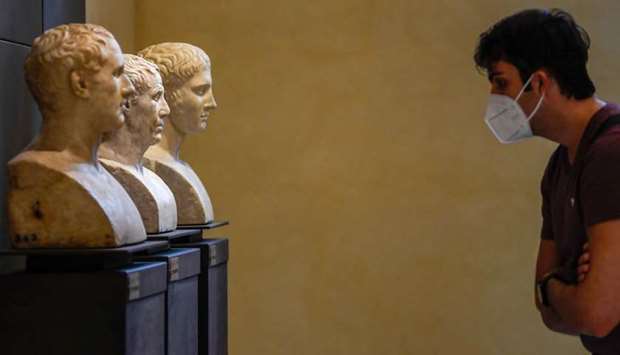Italians are tasting freedom after emerging from a strict lockdown that helped contain one of the world’s most devastating outbreaks of the novel coronavirus.
As people sip espressos in cafes, eat pizzas in restaurants and chat in piazzas, the shift begs a question: Might a second wave of infections follow?
“The decision to reopen is a bit of a gamble,” Professor Massimo Andreoni, head of the infective diseases department at Rome’s Policlinico Tor Vergata hospital, told DPA.
“From a technical, infection and epidemiological point of view, I would have been against it. I would have said we should have waited a bit more,” he said.
“But given our country’s very complicated economic, social and political situation, it was inevitable to take a step a little more prematurely,” he said.
“It’s OK. We can do it, but with adequate precautions.”
Italy entered a full lockdown on March 10, but orders to stay home were lifted on May 18. Officials are now planning a gradual return to normality, albeit with masks and social distancing.
Gyms and pools are due to reopen on Monday.
On June 3, the government is set to lift the ban on travel between the country’s regions, and to reopen borders to visitors from the rest of the European Union.
“We are aware that the start of the new phase could lead, in some areas, to an increase in the infection curve. But it is a risk that we have calculated,” Prime Minister Giuseppe Conte said last week.
Addressing parliament on May 21, he said Italy could not afford to remain under lockdown “for an indefinite period,” and not just for economic reasons.
Maintaining restrictions “beyond what is necessary to reverse the infection curve would be unreasonable and absolutely incompatible with the principles of our Constitution,” he said.
Next Saturday marks 100 days since the epidemic started in the northern Lombardy region.
To date, nearly 33,000 people have died and almost 230,000 have been infected.
But the worst seem to be over.
Andreoni’s hospital has not admitted any new Covid-19 patients for several days, whereas it was taking in up to 25 people each day at the height of the crisis in late March.
The number of patients in intensive care has fallen nationwide from a peak of more than 4,000 to around 550.
Active cases are down from 108,000 on April 19 to fewer than 56,000 on Sunday.
There is a consensus that the virus has become more manageable: Social distancing rules are helping to contain its spread, hospitals are better prepared, and treatment is more effective.
When Italy’s first locally transmitted case was diagnosed on February 20, the virus had been circulating for weeks, if not months.
But a possible second wave is not likely to go undetected for so long.
With warmer weather, people are more likely to spend time outdoors, which reduces contagion risks.
And some suggest the virus has mutated into a less virulent strain, although this is subject to much debate.
The clinical evidence seems “rather clear” on this, Professor Guido Silvestri, a microbiologist and immunologist from the Yerkes National Primate Research Center at Emory University, wrote on Facebook.
“It’s a sensational and dangerous piece of fake news because there is no scientific evidence,” Andreoni retorted, insisting that infection numbers have fallen because of the lockdown.
The weakest aspect of Italy’s easing strategy is that it still lacks the capacity to test and isolate a potentially huge number of people who are infected with the virus but show no symptoms.
Alessio Fantini, a nurse in Rome who looked after Covid-19 patients in a nursing home from mid-March to mid-May, said the number of undetected cases “is a huge question mark.”
“The paradox is that I almost felt safer in my Covid-19 ward, where I know what I was dealing with, than being out in the streets now, where I don’t know if who I meet is infected or not,” he told DPA.
Italy is now carrying out more than 70,000 swab tests for the virus each day, up from 15,000 in mid-March, according to calculations by YouTrend.
But the situation varies across the country, amid a regionalised health system in which standards are not uniform, including in the collection of infection data that informs government decisions.
Despite these concerns, the route forward is clear, as the authorities appear confident there will be no need for a return to the draconian measures of the past few months.
“If we had to go back to strong containment measures and restricting cherished freedoms it was hard enough to do the first time, and would be even harder the second time,” Andreoni warned. — DPA

A visitor wearing a face mask views marble busts of the permanent collection at the Capitoline Museum (Musei Capitolini) in Rome after it reopened as Italy eased the lockdown imposed to curb the spread of the Covid-19 infection.
